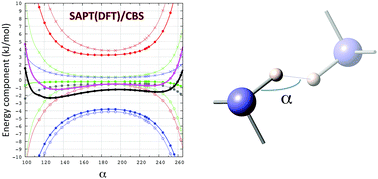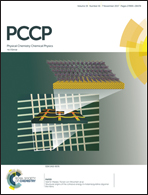Attractive PH⋯HP interactions revealed by state-of-the-art ab initio calculations†
Abstract
We report in this work a combined structural and state-of-the-art computational study of homopolar P–H⋯H–P intermolecular contacts. Database surveys have shown the abundance of such surprisingly unexplored contacts, which are usually accompanied by other weak interactions in the solid state. By means of a detailed theoretical study utilizing SAPT(DFT), MP2, SCS-MP2, MP2C and CCSD(T) methods and both aug-cc-pVXZ and aug-cc-pCVXZ (X = D, T, Q, 5) basis sets as well as extrapolation to the CBS limit, we have shown that P–H⋯H–P contacts are indeed attractive and considerably strong. SAPT(DFT) calculations have revealed the dispersive nature of the P–H⋯H–P interaction with only minor contribution of the inductive term, whereas the first-order electrostatic term is clearly overbalanced by the first-order exchange energy. In general the computed interaction energies follow the trend: EMP2Cint ≈ ESCS-MP2int < ESAPT(DFT)int < EMP2int. Our results have also shown that the aug-cc-pVDZ (or aug-cc-pCVDZ) basis set is not yet well balanced and that the second-order dispersion energy term is the slowest converging among all SAPT(DFT) energy components. Compared to aug-cc-pVXZ basis sets, their core-correlation counterparts have a modest influence on all supermolecular interaction energies and a negligible influence on both the SAPT(DFT) interaction energy and its components.



 Please wait while we load your content...
Please wait while we load your content...